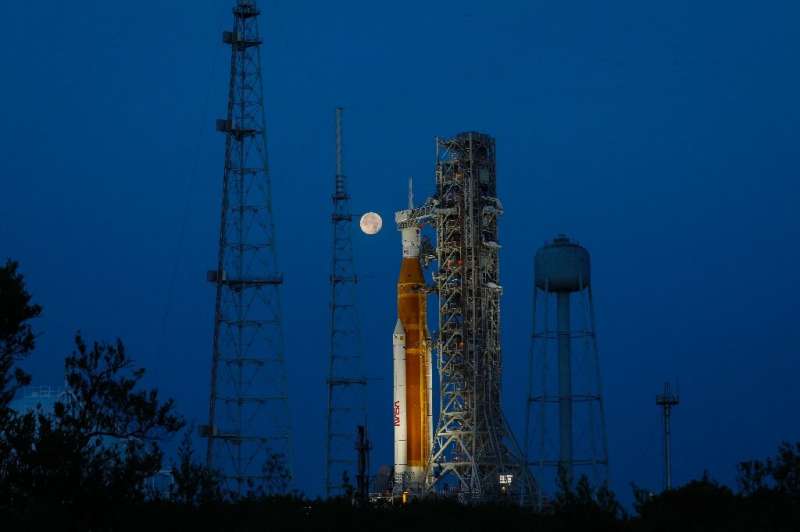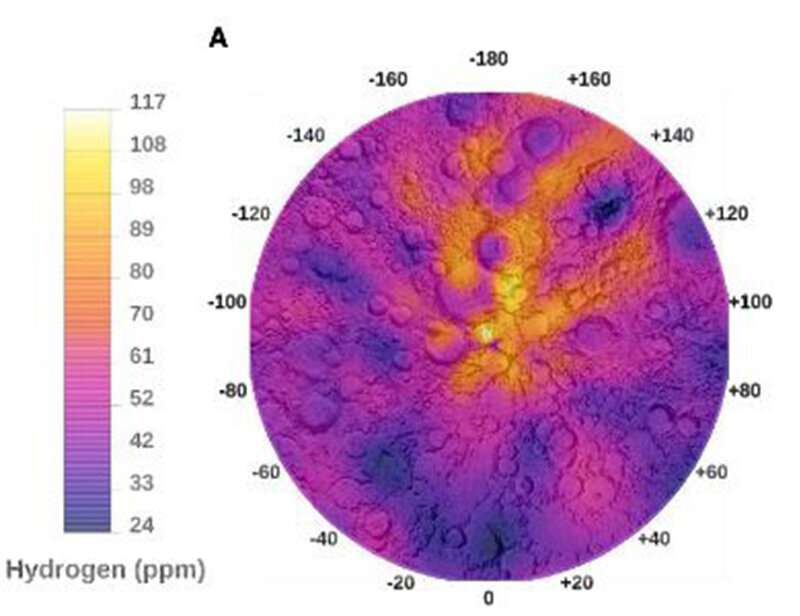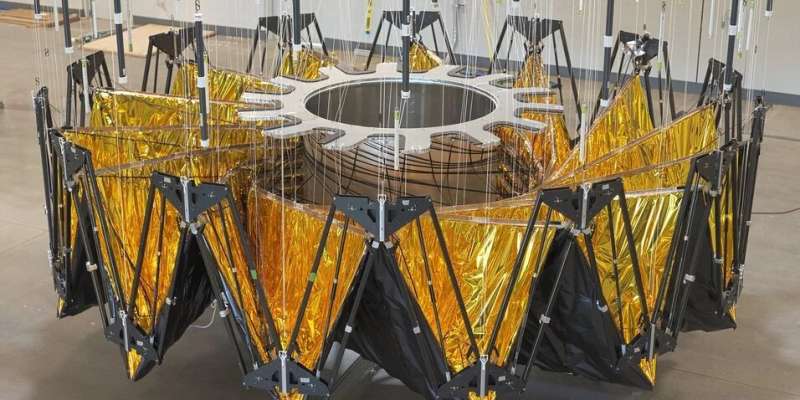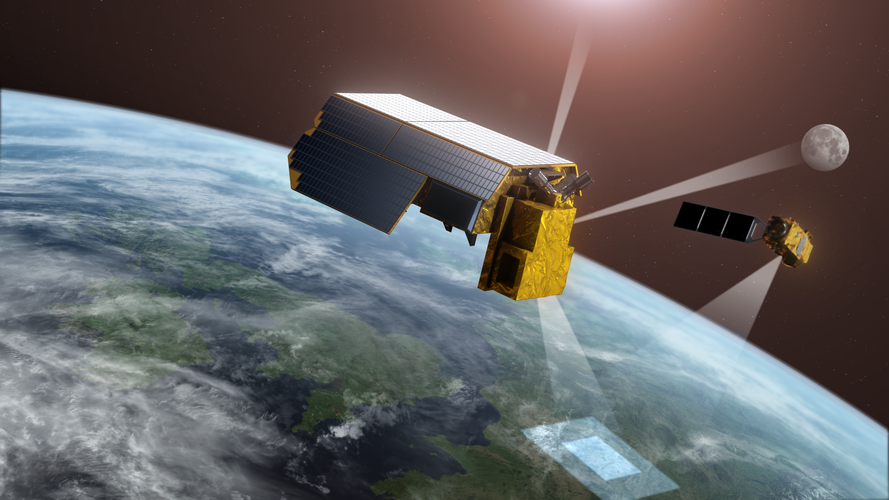
Copernical Team
Goodyear joins Lockheed Martin to commercialize lunar mobility
 The Goodyear Tire and Rubber Company supplied essential products for NASA's Apollo program, including the Apollo 11 mission which landed on the Moon 53 years ago today. The company will continue that tradition-focusing on lunar vehicle tires-by joining Lockheed Martin in its development of a lunar mobility vehicle.
Since Apollo, Goodyear continued innovating alongside NASA to advance desig
The Goodyear Tire and Rubber Company supplied essential products for NASA's Apollo program, including the Apollo 11 mission which landed on the Moon 53 years ago today. The company will continue that tradition-focusing on lunar vehicle tires-by joining Lockheed Martin in its development of a lunar mobility vehicle.
Since Apollo, Goodyear continued innovating alongside NASA to advance desig Australian rocketry team regains sky wings with triple win at Spaceport America Cup
 The USYD Rocketry Team has been announced as the overall winner of the Spaceport America Cup intercollegiate rocketry competition, held annually in New Mexico. Competing against 97 student teams from around the globe, including ETH Zurich and the Norwegian University of Science and Technology, the University of Sydney team placed first in three categories - winning the overall competition with t
The USYD Rocketry Team has been announced as the overall winner of the Spaceport America Cup intercollegiate rocketry competition, held annually in New Mexico. Competing against 97 student teams from around the globe, including ETH Zurich and the Norwegian University of Science and Technology, the University of Sydney team placed first in three categories - winning the overall competition with t NASA's new Moon rocket to launch as soon as August 29

Mark your calendars: NASA's Artemis program to return to the Moon could launch its first uncrewed test flight as soon as August 29, the agency said Wednesday.
Artemis-1 is the first in a series of missions as the United States seeks to return humans to the Moon, build a sustained presence there, and use the lessons gained to plan a trip to Mars sometime in the 2030s.
Assembling the first global map of lunar hydrogen

Using data collected over two decades ago, scientists from the Johns Hopkins Applied Physics Laboratory (APL) in Laurel, Maryland, have compiled the first complete map of hydrogen abundances on the Moon's surface. The map identifies two types of lunar materials containing enhanced hydrogen and corroborates previous ideas about lunar hydrogen and water, including findings that water likely played a role in the Moon's original magma-ocean formation and solidification.
APL's David Lawrence, Patrick Peplowski and Jack Wilson, along with Rick Elphic from NASA Ames Research Center, used orbital neutron data from the Lunar Prospector mission to build their map. The probe, which was deployed by NASA in 1998, orbited the Moon for a year and a half and sent back the first direct evidence of enhanced hydrogen at the lunar poles, before impacting the lunar surface.
Engineer uses ancient art of origami to solve a very modern aerospace problem

If you've ever made an origami paper crane, using folds and creases to transform a square piece of craft paper into the delicate long-necked bird, it may seem odd that those same folding techniques are being used to develop structures used in one of the most advanced areas of modern technology: space missions.
Yet aerospace engineers have turned to the millenary art of origami to solve a serious conundrum: How do you fit massive structures, like shields that can block starlight and sails that can help propel spacecraft, into the significantly smaller rockets that carry these structures into space? While the sizes of each of these structures vary, picture yourself trying to fit a beach umbrella with a 28-meter diameter (about the length of a basketball court) into a minivan.
TRUTHS shines

Satellites are essential for delivering key data to understand and monitor how the climate crisis is impacting our world, but, in turn, decision-makers need to be confident in the data they use for mitigation strategies and policymaking. TRUTHS, a new ESA mission, will do just this – and, now having passed an important milestone, it is one step closer to becoming a reality.
British-built satellite completes line-up for first launch from Spaceport Cornwall
 A new research satellite from international engineering firm Rhea Group, built in Oxfordshire by space company Open Cosmos, will be launched from the UK later this year.
Virgin Orbit will launch the 'DOVER' pathfinder satellite from Spaceport Cornwall. The satellite will transmit an innovative new signal, specially designed by engineers at RHEA, to provide data from space that can be used
A new research satellite from international engineering firm Rhea Group, built in Oxfordshire by space company Open Cosmos, will be launched from the UK later this year.
Virgin Orbit will launch the 'DOVER' pathfinder satellite from Spaceport Cornwall. The satellite will transmit an innovative new signal, specially designed by engineers at RHEA, to provide data from space that can be used NASA seeks public's designs to throw shade in space
 Searching the universe for Earth-like planets is like looking for a needle in a haystack. To further this exploration, NASA is supporting the early-stage study of a concept for a hybrid observatory that would combine a ground-based telescope with a space-based starshade.
These devices block glare from stars when observing planets outside our solar system, known as exoplanets, from the grou
Searching the universe for Earth-like planets is like looking for a needle in a haystack. To further this exploration, NASA is supporting the early-stage study of a concept for a hybrid observatory that would combine a ground-based telescope with a space-based starshade.
These devices block glare from stars when observing planets outside our solar system, known as exoplanets, from the grou Ericsson, Qualcomm and Thales to take 5G into space
 Ericsson, Thales and Qualcomm Technologies, are planning to take 5G out of this world and across a network of Earth-orbiting satellites. After having each conducted detailed research, which included multiple studies and simulations, the parties plan to enter smartphone-use-case-focused testing and validation of 5G non-terrestrial networks (5G NTN).
The result
Ericsson, Thales and Qualcomm Technologies, are planning to take 5G out of this world and across a network of Earth-orbiting satellites. After having each conducted detailed research, which included multiple studies and simulations, the parties plan to enter smartphone-use-case-focused testing and validation of 5G non-terrestrial networks (5G NTN).
The result SpaceChain completes EVM blockchain testing in Space
 SpaceChain has announced the completion of the testing of the space node it created for Velas Network AG, which is hosted on an LEO satellite and independent of terrestrial networks. The space node is now capable of delivering the full functionalities designed for Velas, including transaction signatures, smart contract deployment, decentralized finance (Defi) activities and non-fungible token (N
SpaceChain has announced the completion of the testing of the space node it created for Velas Network AG, which is hosted on an LEO satellite and independent of terrestrial networks. The space node is now capable of delivering the full functionalities designed for Velas, including transaction signatures, smart contract deployment, decentralized finance (Defi) activities and non-fungible token (N 
